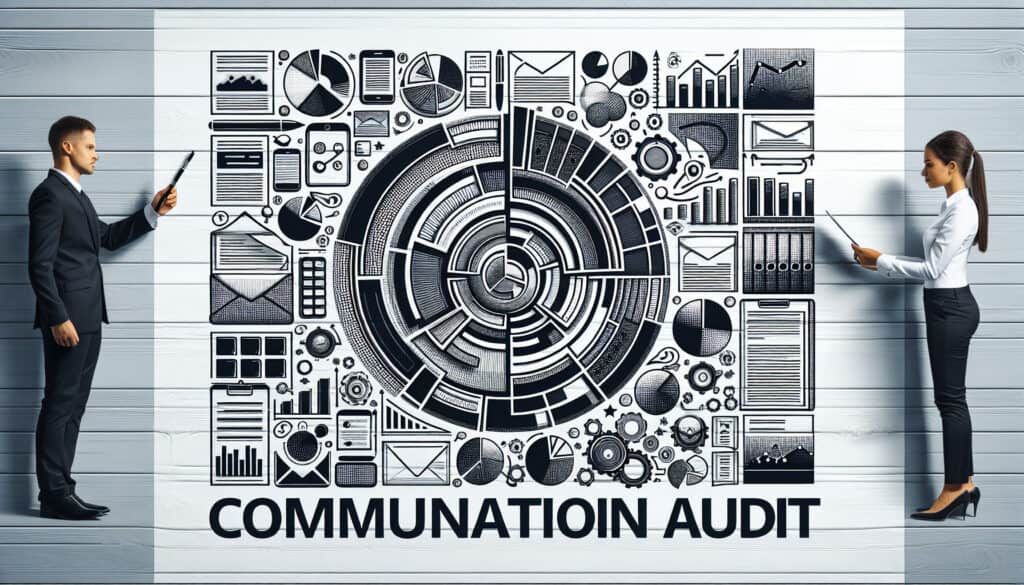A comprehensive and systematic evaluation of an organization’s comunicazione strategies, activities, and effectiveness.
- Metodologie: Clienti e marketing, Economia
Communication Audit

Communication Audit
- Gestione del cambiamento, Miglioramento continuo, Esperienza del cliente, Gestione della qualità
Obiettivo:
Come si usa:
- An audit analyzes an organization's internal and external communication channels and messages to determine if they are consistent, effective, and aligned with strategic goals. It often involves surveys, interviews, and content analysis.
Professionisti
- Identifies strengths and weaknesses in communication, ensures consistency of messaging, and provides data-driven recommendations for improving communication strategy.
Contro
- Can be time-consuming and resource-intensive, may uncover uncomfortable truths, and requires objectivity, often necessitating an external auditor.
Categorie:
- Clienti e marketing, Risorse umane, Gestione del progetto
Ideale per:
- Evaluating the effectiveness of an organization's internal and external communications.
A Communication Audit can be particularly beneficial for organizations in various sectors such as technology, healthcare, and consumer goods, where clear messaging and alignment with strategic goals are paramount. This methodology is often implemented during the planning phase of product development to ensure that all stakeholder communications reflect the organization’s vision and objectives, especially when launching new products or initiatives. Participants in this audit typically include marketing teams, product managers, and communication specialists, who collaborate to evaluate the effectiveness of messaging across numerous channels, including social media, press releases, and internal communication platforms. The audit might also engage end-users or customers through surveys and interviews to gather external perspectives on communication clarity and relevance. By utilizing content analysis, organizations can assess existing materials against desired communication outcomes, identifying inconsistencies or opportunities for enhancement. Industries like education and non-profits also benefit from communication audits, especially when seeking to bolster community engagement or improve public perception. Furthermore, organizations can benchmark their communication practices against industry standards or competitors, enabling data-driven decision-making and strategic modifications to their communication strategy. Regularly performing a communication audit enhances organizational agility in adapting to changing market dynamics and audience expectations, leading to stronger stakeholder relationships and improved overall effectiveness in message delivery.
Fasi chiave di questa metodologia
- Identify and categorize communication channels, both internal and external.
- Analyze the content and messaging of each communication channel.
- Assess the alignment of messages with organizational goals and values.
- Evaluate audience perception and engagement through qualitative and quantitative methods.
- Identify gaps and inconsistencies in messaging across channels.
- Benchmark against industry standards and competitors’ communication strategies.
- Develop actionable recommendations for improving communication effectiveness.
Suggerimenti per i professionisti
- Implement a benchmarking process against industry standards for communication to identify areas needing improvement.
- Incorporate advanced data analytics tools to assess engagement metrics and derive actionable insights from communication channels.
- Facilitate regular cross-departmental workshops to ensure alignment of messaging and gather diverse perspectives on communication effectiveness.
Leggere e confrontare diverse metodologie, raccomandiamo il
> Ampio archivio di metodologie <
insieme ad altre 400 metodologie.
I vostri commenti su questa metodologia o ulteriori informazioni sono benvenuti su sezione commenti qui sotto ↓ , così come tutte le idee o i link relativi all'ingegneria.
Contesto storico
1960
1980
1983
1990
1995
2000
2010
1950
1980
1980
1986
1994
1995
2000
(se la data non è nota o non è rilevante, ad esempio "meccanica dei fluidi", viene fornita una stima approssimativa della sua notevole comparsa)














Post correlati
Gestione delle operazioni di produzione (MOM)
Sistema di esecuzione della produzione (MES)
Piano di controllo della produzione
Test manuali
Schede di valutazione della movimentazione manuale (MAC)
ManTRA (Strumento di valutazione dei rischi delle attività manuali)